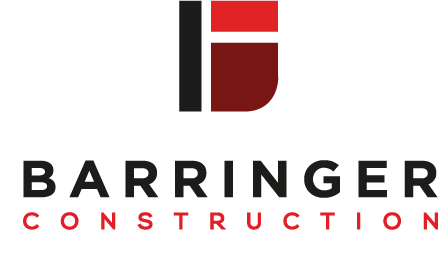
PLEASE, NOT ANOTHER COVID-19 E-BLAST!
We recognize that everyone is getting inundated with information from politicians, community leaders, news media, social media, family, friends, etc. Emotions have spanned from fear and uncertainty around the virus, to concern and frustration around the invasive steps taken that impact peoples livelihood and our broader economy. One of the biggest challenges we all face is how to filter through the noise and get good actionable data that allows us to make responsible decisions around the safety of our customers, community, and team.
To that end, we wanted to provide some good resources and outline how we’ve been using them. Many of these websites aren’t new to you, but perhaps the application of the information could be. Our hope is that through sharing this information it may bring some level of comfort and open up conversation so we can help make each other better during this unprecedented time. The direction from our political leaders and health officials could change this approach tomorrow, but we still wanted to make this resource available to deal with what we know today.
HOW SHOULD WE ASSESS RISK?
Assessing risk is very subjective with a virus that is new and substantially understood. The only logical approach we could take is to lean on the information from the CDC, NCDHHS, OSHA and Mecklenburg County to define risk levels. This provides an objective measurement tool for people to filter the emotional response of being in proximity to someone who is positively diagnosed with the virus.
As more knowledge and statistical data becomes available it is reasonable to assume these tools may be updated. But for now, it gives us a “North Star” in our decision making process.
Each business has to assess their risk tolerance.
For our environment we decided on the following:
- CDC Risk Category – Low or No Identifiable Risk. This is based on no known international travel by our associates.
- OSHA Risk Level – It is our belief that we would be categorized as “Medium Exposure Risk” if no adjustments are made to our work environment. However, with proper planning and procedures we believe we can shift our work environment to the “Low Exposure Risk” category.
- Personal Risk Assessment – We consider this an active tool to evaluate situations as they arise and make decisions on how to respond. Each person has the responsibility to objectively evaluate where they fall on this scale. If someone lands in the Medium or High Risk categories, they will be advised to leave the jobsite and self-quarantine per CDC guidelines until they receive medical evaluation. If they are in the No Risk or Low risk categories, no action is required but we will support the team member if they decide to remove themselves from the site.
RESOURCES WE HAVE FOUND TO BE HELPFUL
AND WHAT THEY SEEM TO BE TELLING US
RISK ASSESSMENT
For our purposes we broke risk assessment down into three big buckets:
Big Picture on a National Scale, Workplace Perspective on a Local Scale, and Individual Assessment.
![bigstock-World-Map-Vector-Isolated-On--326391325 [Converted]](https://www.barringerconstruction.com/wp-content/uploads/2020/03/P.jpg)
1. Big Picture Perspective on a National Scale
Our research found that the Centers for Disease Control and Prevention (CDC) provided the broadest national view
and offered great insight to help narrow our focus.
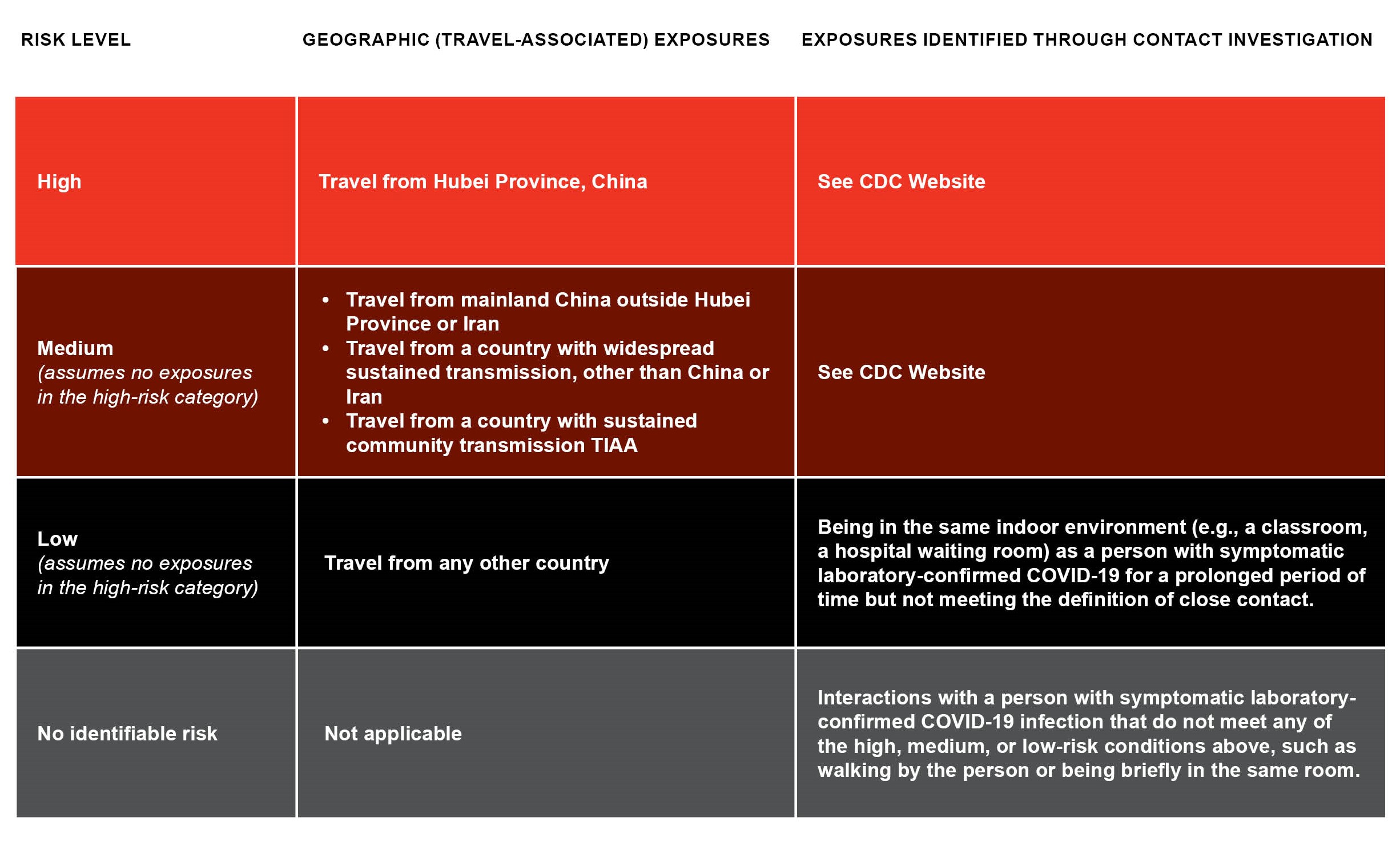
Helpful references that stood out for identifying risk on a national scale:
- Interim Guidance for Businesses and Employers: (https://www.cdc.gov/coronavirus/2019-ncov/community/guidance-business-response.html)
- Risk Assessment Table (https://www.cdc.gov/coronavirus/2019-ncov/php/risk-assessment.html).
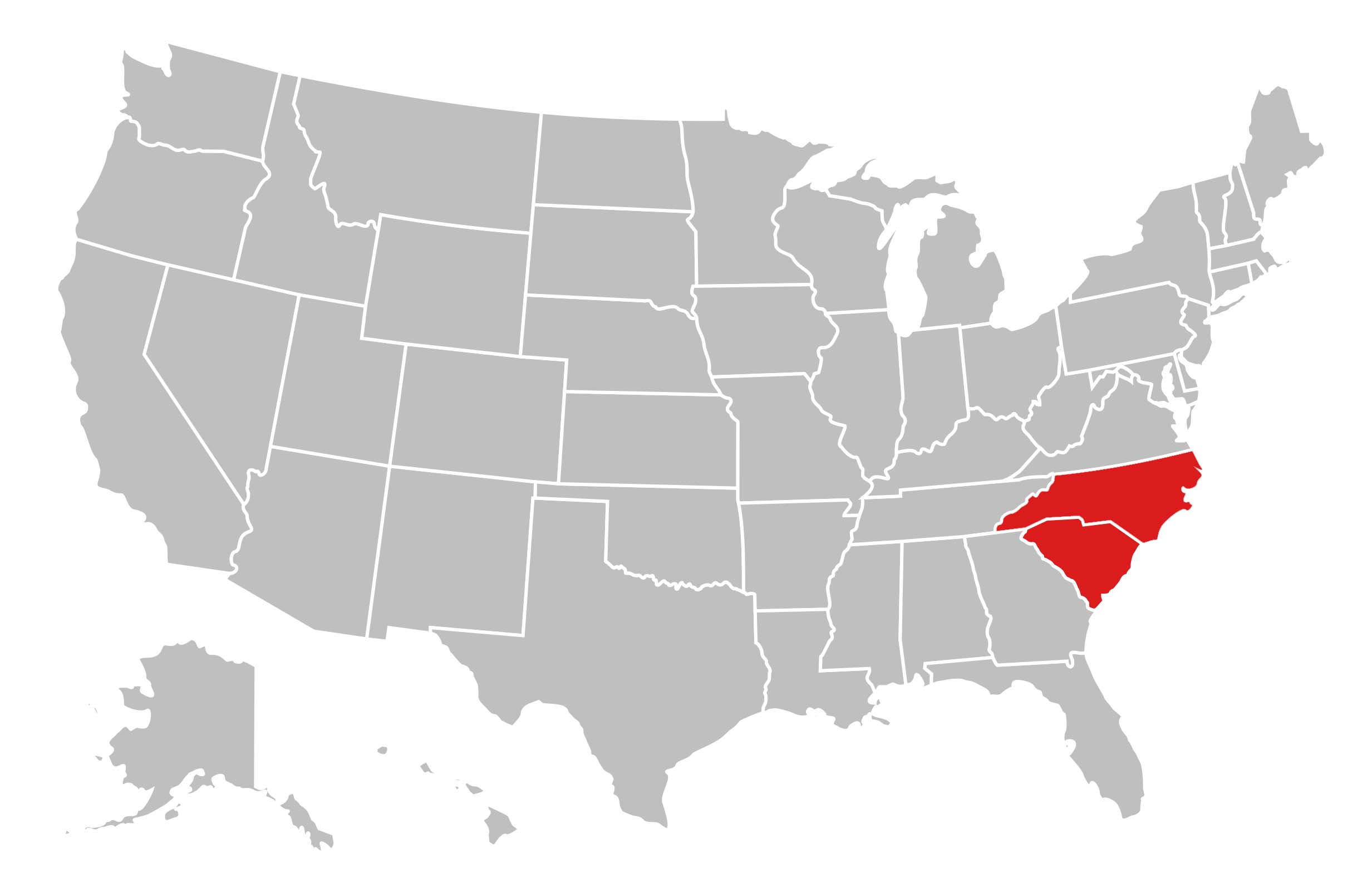
2. Workplace Perspective on a Local Scale
For a more laser focused view on risk assessment in the local workplace, we found the Occupational Safety and Health Administration (OSHA) and the NC Department of Health and Human Services (NCDHHS) to be key resources.
Occupational Risk Pyramid for COVID-19
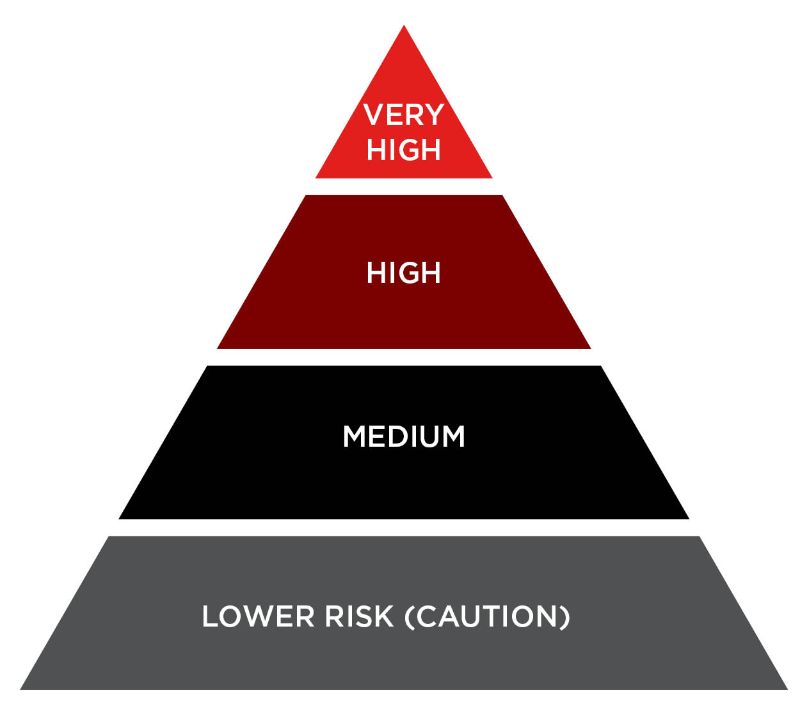
VERY HIGH EXPOSURE RISK
- Healthcare workers (e.g., doctors, nurses, dentists, paramedics, emergency medical technicians) performing aerosol-generating procedures (e.g., intubation, cough induction procedures, bronchoscopies, some dental procedures and exams, or invasive specimen collection) on known or suspected COVID-19 patients.
- Healthcare or laboratory personnel collecting or handling specimens from known or suspected COVID-19 patients (e.g., manipulating cultures from known or suspected COVID-19 patients).
- Morgue workers performing autopsies, which generally involve aerosol-generating procedures, on the bodies of people who are known to have, or suspected of having, COVID-19 at the time of their death.
HIGH EXPOSURE RISK
- Healthcare delivery and support staff (e.g., doctors, nurses, and other hospital staff who must enter patients’ rooms) exposed to known or suspected COVID-19 patients. (Note: when such workers perform aerosol-generating procedures, their exposure risk level becomes very high.)
- Medical transport workers (e.g., ambulance vehicle operators) moving known or suspected COVID-19 patients in enclosed vehicles.
- Mortuary workers involved in preparing (e.g., for burial or cremation) the bodies of people who are known to have, or suspected of having, COVID-19 at the time of their death.
MEDIUM EXPOSURE RISK
LOWER EXPOSURE RISK (CAUTION)
*data courtesy NCDHHS
Helpful references that stood out with identifying risk on a local scale:
NC Department of Health and Humans Services: (https://www.ncdhhs.gov/divisions/public-health/coronavirus-disease-2019-covid-19-response-north-carolina/businesses-employers)
OSHA – Guidance on Preparing Workplaces for COVID-19 (https://www.osha.gov/Publications/OSHA3990.pdf).

3. Individual Assessment
With the sensationalized nature of news media it is very difficult to find an objective method of assessing personal risk of getting the
COVID-19 virus. Mecklenburg County provided a graphic that distilled the information from CDC and OSHA in a form that is easily understood. This allowed for individual assessments to be done based on exposure.
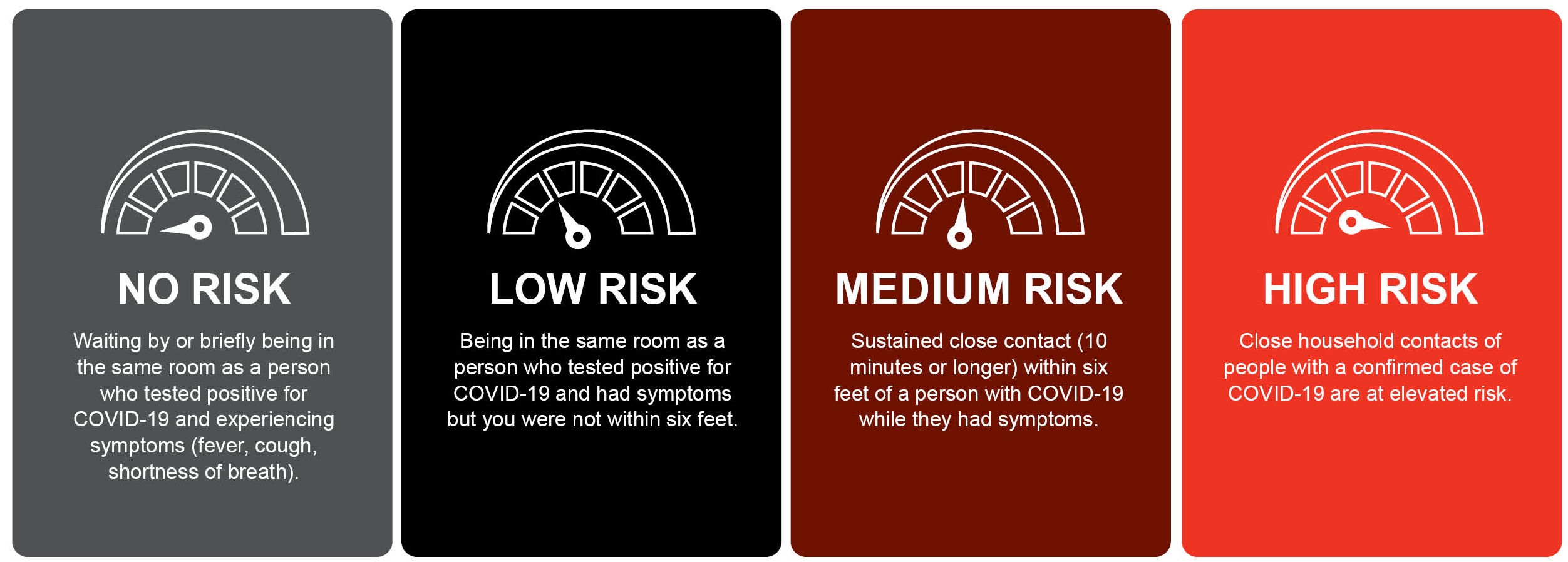
*Data courtesy Mecklenburg County: (https://www.mecknc.gov/news/Pages/Update-on-Novel-Coronavirus.aspx)
HOW CAN WE BE PROACTIVE, BUT MORE IMPORTANTLY, EFFECTIVE?
Every work environment can be different and blanket policies rarely provide adequate direction to the full team.
For our purposes we broke it down to the Office Environment and Field Staff and Jobsites.
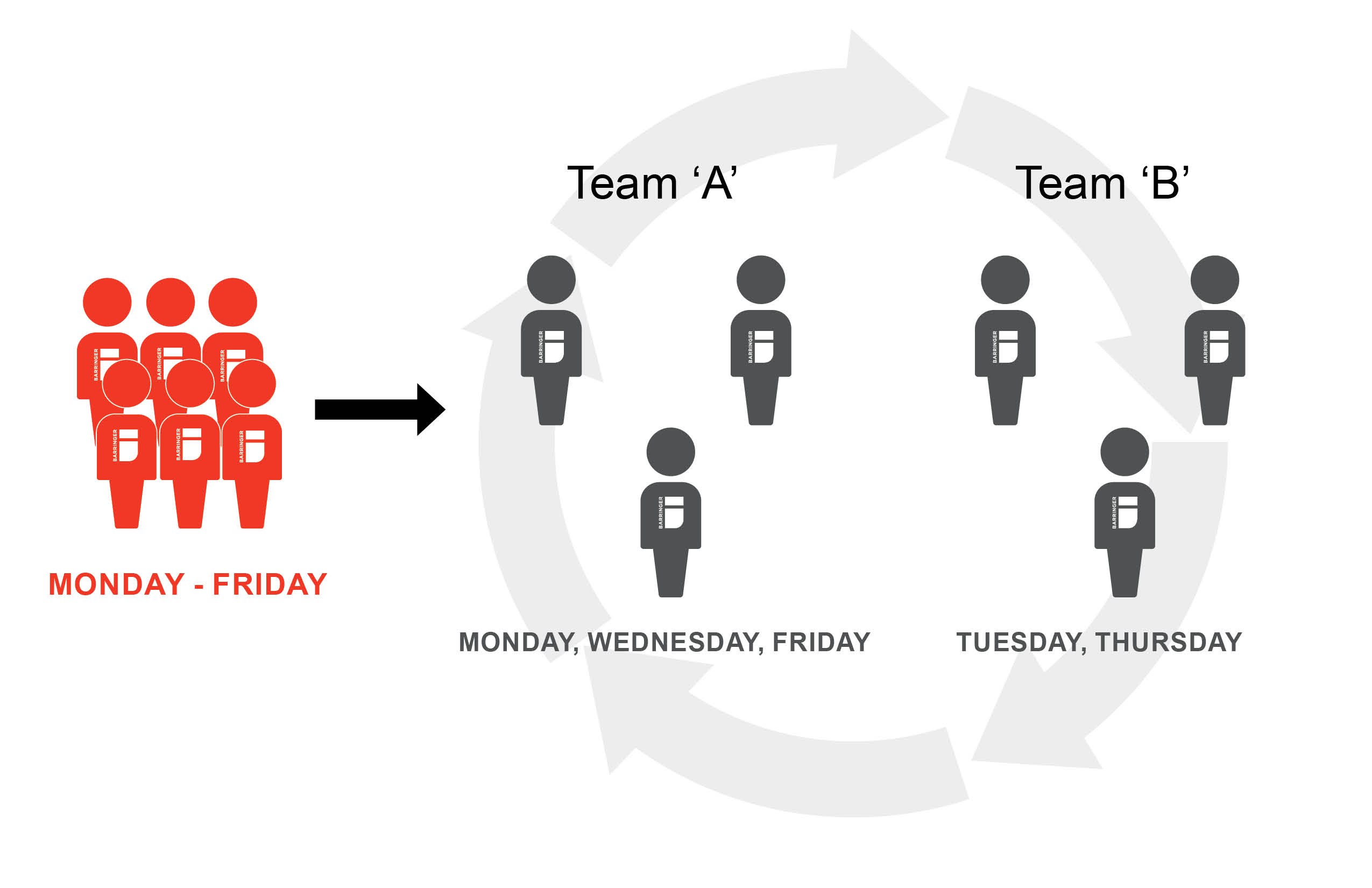
1. The Office Environment
Based on a risk assessment of our office we elected to go to an A / B day configuration where each team alternates days.This allows for adequate distance between people, a less densely populated office and continuity of leadership. Additional cleaning and workplace hygiene has also been established and measures have been taken to ensure adequate opportunities for connectivity with the remote work force.
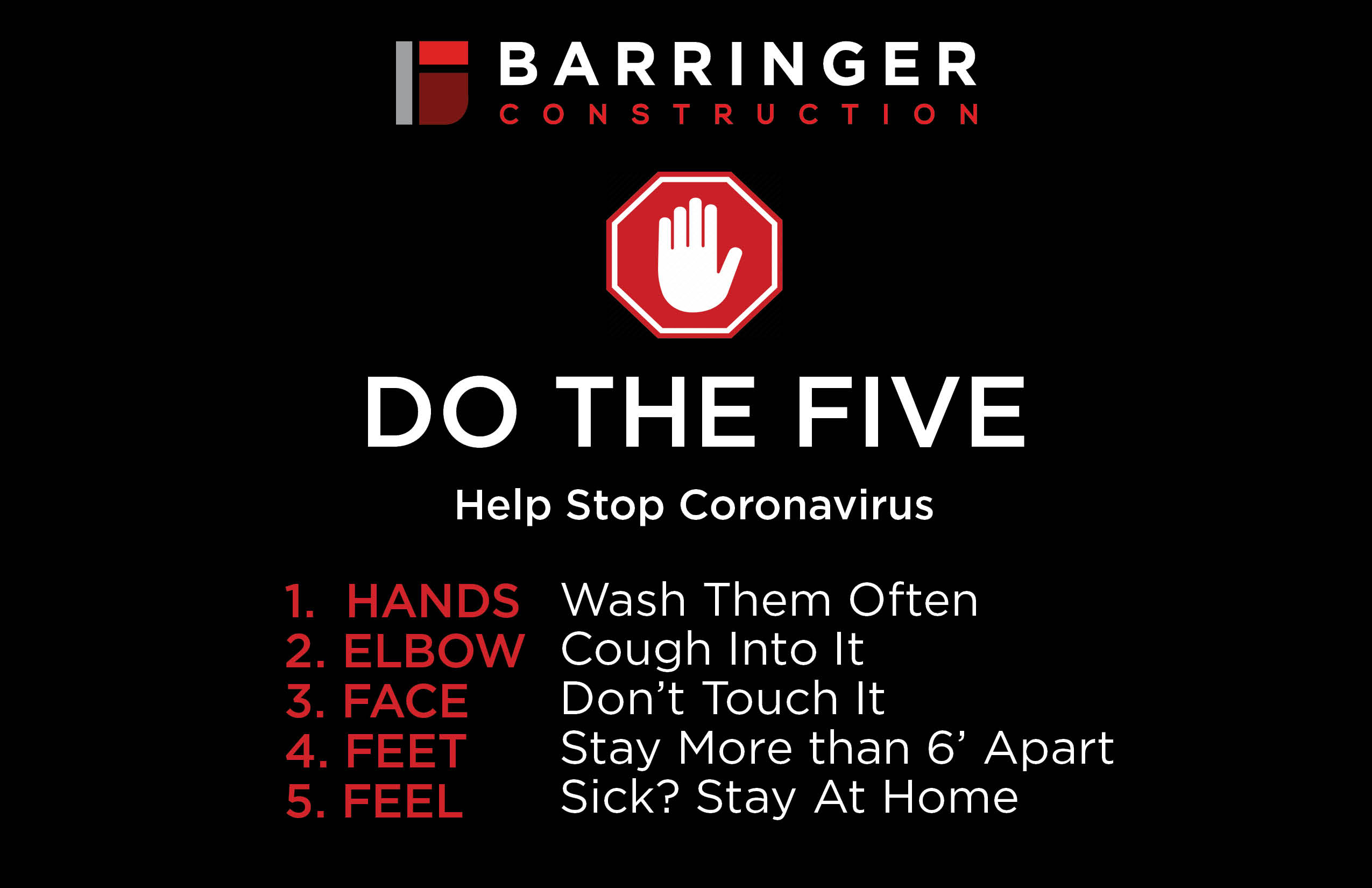
2. Field Staff and Jobsites
Each project team has generated a project specific “Preparedness and Response Plan” that is customized to their environment.
This is a living document and is revisited as conditions on the ground change. Our customers and
building partners have been part of the process in creating these plans.
- Protocol if a person is positively diagnosed with COVID-19
- Protocol if someone is sick or displays symptoms
- Jobsite cleaning procedures and precautions
- How will the entry to the site and vertical transportation be addressed
- Suggested maximum number of people in a given area / floor
- Suggested minimum proximity of employees and subcontractor partners
- Working hours and/or shift work to be implemented
- Risk level per OSHA
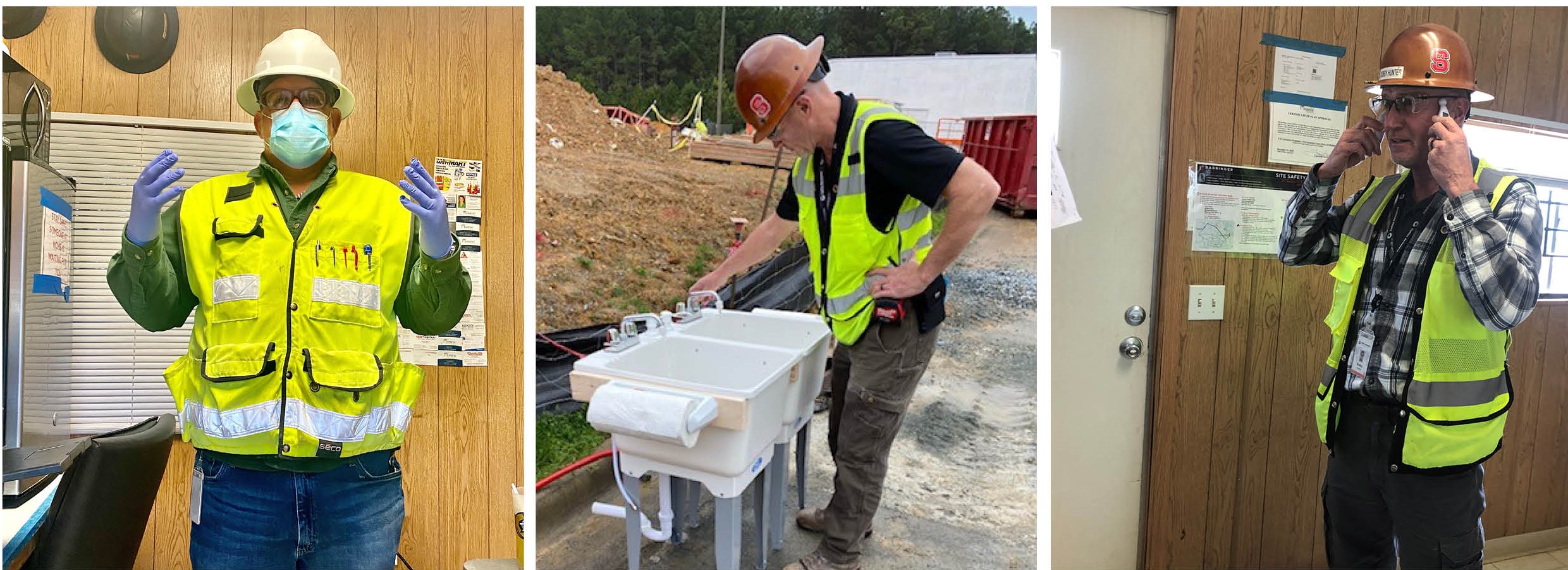
COMMUNICATION MATTERS
- Our hope is that developing a plan that is built on responsible guidance and customized for each work environment will provide the best chance to keep everyone safe and work moving forward.
- You should see a site specific plan for your project and we would welcome any feedback to improve upon it.
- When an incident occurs, expect a prompt communication with the relevant risks clearly identified.
We certainly don’t have all the answers but we hope this encourages a feeling of safety on your projects and provides resources to help you in refining an approach for your business.
Thank you for the continued partnership, friendship and support. We’ll get through this together and be better for it.
Sincerely,
Your Barringer Family
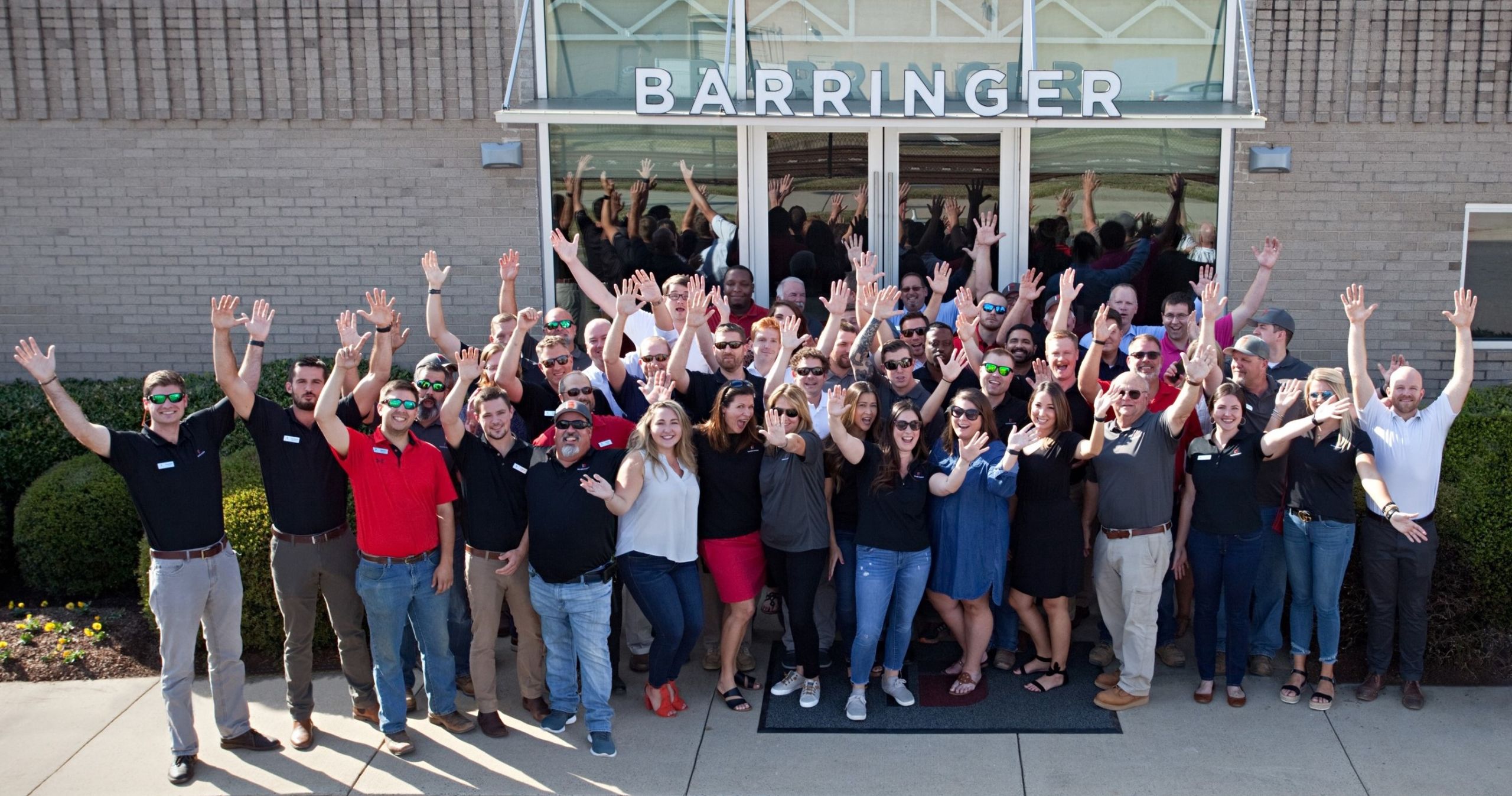
For more information on what we’re doing to help #flattenthecurve and to stay-in-the-know on all things #barringerlife,
follow us on Instagram, Facebook, and LinkedIn!
